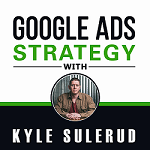In building campaigns for your business, there is no definite set, no one-size-fits-all, of ad groups or keywords. The campaign you build should be based on the product or service that you are selling.
What you need to do is to start researching keywords. Use Google Keyword Planner for this. Just find the things that people are searching for that would lead them to your product or service.
For example: If you are a “junk removal company”, the few keywords that people are typing in that you might want to show up for are “junk removal”, “junk hauling”, “furniture removal”, “electronics recycling”, etc. Once you go to the Keyword Planner, Google is going to feed you more ideas. Keep looking at what makes sense to develop a list of keywords. As you’re developing this list of keywords, make sure to keep it organized by ad groups.
What’s the point of an Ad Group?
An Ad Group is an ad or a set of ads that will show up for a set of keywords.

You will need a set of ad groups if you need different ads for your list of keywords. In this situation, your ad for “junk removal” must look different from your ad for “electronics recycling”. You could, however, put “junk removal” and “junk hauling’ in the same ad group. For keywords like “tv recycling”, “computer recycling”, computer disposal”, these electronics-specific keywords may not need to be in a separate ad group. You can put them all under the “electronics recycling” ad group.
The number of ad groups depends on the number of ads you need and the number of ways you need to put your business in front of people, depending on what they are searching for. The number of keywords is determined by the different ways that people are searching for your product or service.
There are things that you can do to modify those keywords such as adding location names to the keywords. Example: “junk removal in Chicago” or “junk removal near me”. I personally add all the different variations to the keywords because that‘s going to give me more control over the campaign.
If you were to add just one broad match keyword like “junk removal”, your ads are going to show up for all the searches, but it just doesn’t give you control. You’re only able to bid on one keyword vs. bidding on dozens or hundreds of keywords by adding all those specific keywords.
My software KEYWORD BURST can do this for you. You just put in a list of locations and put in your keywords, and it will combine all of that for you. You can find the program at software.adleg.com.
As far as keyword types go, I stick to exact match keywords as these can give you the best control possible over when your ads are showing up. I also use phrase match and modified broad match keywords. It’s very rare that I need to use just straight broad match, because Google is going to put too much garbage to my campaign.
There may not be enough monthly searches for you to use exact match targeting, so you have to use exact match for the best control, plus phrase match and modified broad match because people are searching in different ways. This is to make sure that you’re getting in front of all the possible queries.
When it comes to device preference and location limit, that’s going to be dictated by the campaign.
For device preference, usually there isn’t a good reason to start out bidding differently for computers vs. mobile vs. tablet, unless you have some kind of product or service that’s specifically relevant to a specific device.

Eventually, the data might tell you to bid differently for different devices. If you find out that particular customers are more likely to make a purchase when they are on a computer, then you might want to adjust your bids accordingly.
Location limit is also dictated by your type of product and service.

If you’re only serving a certain area, then that needs to be your location limit. If it’s a whole country you’re selling to (or just a zip code), then that’s what your location limit should be. Just make sure that you’re not using the default setting which is going to include people who are interested in that location. You just want to target “people who are in or regularly in your target location”
What’s the bottom line?
Make sure to use the Google Keyword Planner, or better yet, use my software Keyword Burst.
Start listing your keywords, start thinking about how they are going to be organized into ad groups and what the ads should say for those ad groups. Then once you go set up your campaign, you have everything in front of you, and you start plugging the information in.
